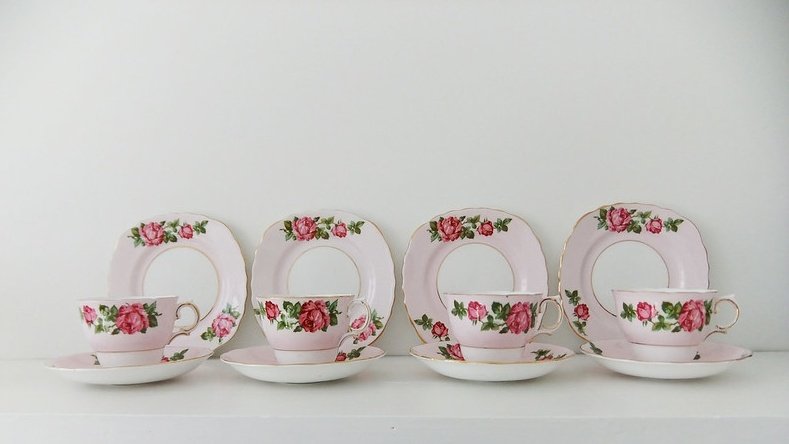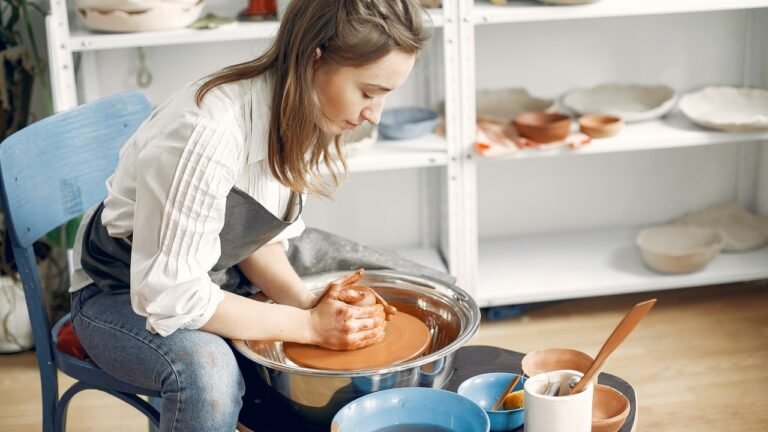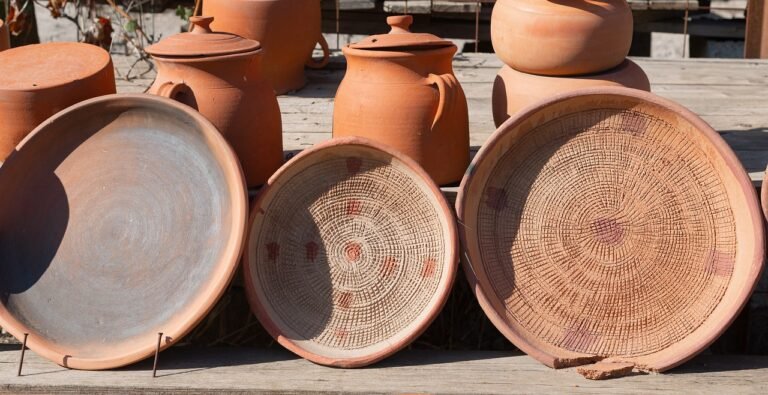Which Is Better: Porcelain Vs Bone China?
If you’ve ever held a piece of bone china, you’ll have noticed its stunning transparent quality. When you keep it in the light, it is possible to observe how your shadow reflects off your hands when you hold it against bone china.
Which is the better choice? When it comes to the drinking experience, both aren’t affecting the flavor of the tea. When it comes to heat retention, both are performing equally. So the answer to the better option is a choice of taste.
There is a glistening delicateness to it that proves its strength. It’s much more difficult to chip than one would think and is remarkably robust, but it is essential to be cautious when handling delicate bone china because it is heartbreaking to ruin your precious pieces. It is probably best to wash bone china with a soft cloth. Read out this whole guide to know the difference between Porcelain Vs Bone China.
History of Bone China
Bone china has a fascinating background. Thomas Frye had a porcelain manufacturing facility located in Bow, the city’s East End, in 1748, close to the slaughterhouses and markets for cattle that were prevalent in those days.
He started using the ash bones from the bones of slaughtered cattle as one of the ingredients required to create what he termed “fine porcelain.” Using as much as 45 percent bone ash resulted in high-quality products; however, the process did not succeed commercially. In the late 1800’s Josiah Spode, in his factory in Stoke-on-Trent, England, developed bone ash to make porcelain.
He developed a recipe that was incredibly profitable in terms of fame and commercial success for several years. The materials that make-up bone china and the processes that go into its production are pricey, which is why high-end bone china is a more expensive product.
What is Porcelain?
Porcelain is a material made of ceramic resulting from the heating of material at extremely high temperatures. It’s a term used to describe ceramic items that are transparent and white. Porcelain is often used to create vessels, teapots, and pottery ware.
Tea sets made of porcelain, teapots, and tea cups were popular gifts for the upper class of imperial China. It is mainly made of the following elements: Kaolin (a type of clay) and pottery stone, quartz, and feldspar.
Bone China and Porcelain Difference
If you’re unsure about the distinction between bone china and porcelain, these guidelines can help make things more straightforward.
While the surface of porcelain is more durable, it’s also more brittle because of the need for higher temperatures to fire. Porcelain is moldable into various shapes because of its composition. Bone china has a refined and delicate appearance due to its famous white transparency due to the bone ash component.
The durability of Porcelain Vs Bone China
Porcelain and bone china are both made from clay. However, the components used to make the clay mix determine the specific shape it takes, whether bone or porcelain. These materials are used for making dinnerware, tiles, services, and ornaments.
Both are hard, white, vitreous components believed to be highly durable.
1. Hard-paste Porcelain
It developed the first type of porcelain produced in the past in China. It is composed of kaolinite clay, feldspar, and quartz. The mix is then fired at an extremely high temperature of approximately 2550 F, resulting in a highly dense fusion of elements.
Hard-paste Porcelain Durability
Because it is hard-paste porcelain fired at an extremely high temperature, it’s a highly durable material. The higher temperature creates more of a more vital fusion of elements. It is therefore invulnerable to heat, electricity, and moisture, which could weaken its integrity if it were to enter it.
3. Soft-paste Porcelain
The soft paste is the result of the first attempts by Western travelers in the seventeenth century to duplicate the porcelain they had seen from the East, composed initially of ground-up glass and clay. However, even though they manufacture kaolinite clay, they’re typically fired at lower temperatures than hard-paste.
Soft-paste Porcelain Durability
The lower firing temperature for soft-paste porcelain implies that the elements that comprise it aren’t as tightly bonded and result in less durable products.
3. Bone China Durability
The bone china type is by far the most challenging kind of porcelain. It can be fired at temperatures such as just 1,450 F to achieve similar strength to hard-paste porcelain fired at a higher temperature. Combining bone ash ensures the bone china will be softer than other kinds of porcelain and, therefore, less susceptible to cracking or chipping.
Which is More Expensive: Bone China VS Porcelain?
Bone china has a more stylish appearance because of the lower mass and composition of the body. It’s usually a little higher priced than porcelain because of its manufacturing process and the overall refined appearance. Porcelain is typically more robust than bone china products.
Is Porcelain or Bone China Better for Everyday Use?
Bone China is considered the best quality ceramic used in tableware. It is suitable for regular use and special occasions because it’s durable, sturdy, generally chip-resistant, and stunningly beautiful.
Why is Tea Better in Bone China?
Furthermore, because of the thickness and lightness of bone china, the mugs’ edges are fragile, allowing the tea to glide effortlessly over your tongue, making the tea a smooth and easy experience. The most exposure to your palate. This is the reason why tea tastes better from bone china.
How can you keep your coffee warmer for longer?
#1 Cup Cozy or Coffee Sleeve Cup sleeves are inexpensive and are an effective way to keep your coffee warm for longer. And, not only that, it stops the heat from scorching your hands. The sleeves act as an insulator and keep the heat inside your cup and away from the skin.
What kind of cup can hold the most heat for the longest?
The type of cup that keeps the coffee most hot for the longest time is stainless-steel vacuum-insulated cups that can stay hot for up to 6-12 hours. These heated coffee cups powered by batteries rank in the close third because they maintain the temperature of coffee to the ideal level for as long as the batteries last.









